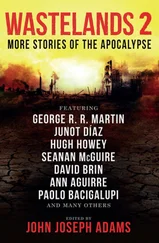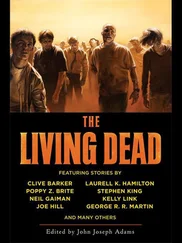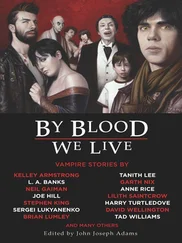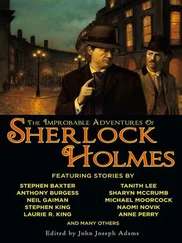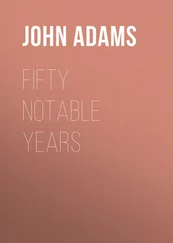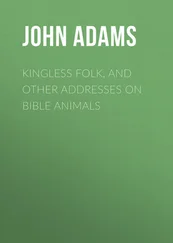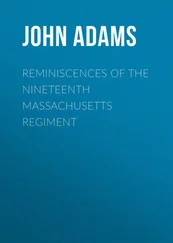“Where?”
He describes the crater’s location.
“Oh. Okay. We’re calling that one San Jacinto. Ah, no, your LM isn’t there.”
“I know. I walked back. The crater’s empty.”
“No, it isn’t,” she says, but there is a trace of alarm in her voice. “That’s where my LM is. With my partner, and the Payload Module.”
Payload Module?
“The hell with it,” she says. “Let’s go see.”
She turns and starts to lope back to her flying craft, rocking from side to side. He stands there and watches her go.
After a few steps she stops and turns around. “You want a lift?”
“Can you take two?”
“Sure. Come on. What choice do you have, if you’re stuck here without a LM?”
Her voice carries a streak of common sense that somehow comforts him.
Side by side, they bound over the Moon.
They reach Williams’s flying machine. It is just an aluminium box sitting squat on its four legs, with vernier rocket nozzles stuck to the walls like clusters of berries. The pilot has to climb in at the back and stand over the cover of the main rocket engine, which is about the size of a car engine, Bado supposes. Big spherical propellant and oxidiser tanks are fixed to the floor. There is an S-band antenna and a VHF aerial. There is some gear on the floor, hammers and shovels and sample bags and cameras; Williams dumps this stuff out, briskly, onto the regolith. Williams hops up onto the platform and begins throwing switches. Her control panel contains a few instruments, a CRT, a couple of handsets.
Bado lugs his heavy tool carrier up onto the platform, then he gets hold of a rail with both hands and jumps up. “What did you call this thing? An LFU?”
“Yeah. Lunar Flying Unit.”
“I’ve got vague memories,” says Bado. “Of a design like this. It was never developed, when the extended Apollo missions were cancelled.”
“Cancelled? When did that happen?”
“When we were cut back to stop when we get to Apollo 17.”
“Uh huh,” she says dubiously. She eyes the tool carrier. “You want to bring that thing?”
“Sure. It’s not too heavy, is it?”
“No. But what do you want it for?”
Bado looks at the battered, dusty carrier, with its meaningless load of rocks. “It’s all I’ve got.”
“Okay. Let’s get out of here,” she says briskly.
Williams kicks in the main rocket. Dust billows silently up off the ground, into Bado’s face. He can see frozen vapour puff out of the attitude nozzles, in streams of shimmering crystals, as if this is some unlikely steam engine, a Victorian engineer’s fantasy of lunar flight.
The basin of Wildwood Crater falls away. The lift is a brief, comforting surge.
Williams whoops. “Whee-hoo! What a ride, huh, pal?” She takes the LFU up to maybe sixty feet, and slows the ascent. She pitches the craft over and they begin sailing out of Wildwood.
The principles of the strange craft are obvious enough to Bado. You stand on your rocket’s tail. You keep yourself stable with the four peroxide reaction clusters, the little vernier rockets spaced around the frame, squirting them here and there. When the thrust of the single big downwards rocket is at an angle to the vertical, the LFU goes shooting forwards, or sideways, or backwards across the pitted surface. Williams shows him the hand controls. They are just like the LM’s. The attitude control moves in clicks; every time Williams turns the control the reaction rockets will bang and the LFU will tip over, by a degree at a time. The thrust control is a toggle switch; when Williams closes it the lift rockets roar, to give her a delta-vee of a foot per second.
“These are neat little craft,” Williams says. “They fly on residual descent stage propellants. They’ve a range of a few miles, and you can do three sorties in each of them.”
“Each?”
“We bring two. Rescue capability.”
Bado thinks he is starting to see a pattern to what has happened to him.
In a way, the presence of the camera in his carrier is reassuring. It means he isn’t crazy. There really have been two copies of the Surveyor: one of which he’s sampled, and one he hasn’t.
Maybe there is more than one goddamn Moon.
Moon One is the good old lantern in the sky that he and Slade touched down on yesterday. Maybe Slade is still back there, with the LM. But Bado sure isn’t. Somehow he stumbled onto Moon Two, the place with the Surveyor, but no LM. And then this Williams showed up, and evidently by that time he was on another Moon, Moon Three, with its own copy of the Surveyor. And a different set of astronauts exploring, with subtly different equipment.
As if travelling to one Moon isn’t enough.
He thinks about that strange, heat-haze shimmer. Maybe that has something to do with these weird transfers.
He can’t discuss any of this with Williams, because she hasn’t seen any of the changes. Not yet, anyhow.
Bado clings to the sides of the LFU and watches the surface of the Moon scroll underneath him. There are craters everywhere, overlaid circles of all sizes, some barely visible in a surface gardened by billions of years of micrometeorite impact. The surface looks ghostly, rendered in black and white, too stark, unmoving, to be real.
He knew he was taking a risk, but he took his lunar rocks to a couple of universities.
He got laughed out of court. Especially when he wouldn’t explain how these charcoal-dark rocks might have got from the Moon to the Earth.
“Maybe they got blasted off by a meteorite strike,” he said to an “expert” at Cornell. “Maybe they drifted in space until they landed here. I’ve read about that.”
The guy pushed his reading glasses further up his thin nose. “Well, that’s possible.” He smiled. “No doubt you’ve been reading the same lurid speculation I have, in the popular science press. What if rocks get knocked back and forth between the planets? Perhaps there are indeed bits of the Moon, even Mars, to be turned up, here on Earth. And, since we know living things can survive in the interiors of rocks—and since we know that some plants and bacteria can survive long periods of dormancy—perhaps it is even possible for life to propagate itself, across the trackless void, in such a manner.”
He picked up Bado’s Moon rock, dubiously. “But in that case I’d expect to see some evidence of the entry of this rock into the atmosphere. Melting, some glass. And besides, this rock is not volcanic. Mr Bado, everyone knows the Moon’s major features were formed exclusively by vulcanism. This can’t possibly be a rock from the Moon.”
Bado snatched back his rock. “That’s Colonel Bado,” he said. He marched out.
He gave up, and went back to Daytona Beach.
The LFU slides over the rim of Taylor Crater. Or San Jacinto. Bado can see scuffed-up soil below him, and the big Huckleberry Finn Crater to his left, where he and Slade made their first stop.
At the centre of Taylor stands a LM. It glitters like some piece of giant jewellery, the most colourful object on the lunar surface. An astronaut bounces around in front of it, like a white balloon. He—or she—is working at what looks like a surface experiment package, white-painted boxes and cylinders and masts laid out in a star formation, and connected to a central nuclear generator by orange cables. It looks like an ALSEP, but it is evidently heavier, more advanced.
But the LM isn’t alone. A second LM stands beside it, squat and spidery. Bado can see that the ascent stage has been heavily reworked; the pressurised cabin looks to be missing, replaced by cargo pallets.
“That’s your Payload Module, right?”
“Yeah,” Williams says. “The Lunar Payload Module Laboratory. It got here on automatics before we left the Cape. This is a dual Saturn launch mission, Bado. We’ve got a stay time of four weeks.”
Читать дальше

